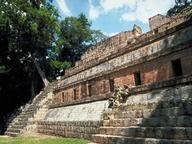Quiz Answer Key and Fun Facts
1. Archeology is the study of human activity through the analysis of materials. Which of the following would NOT be considered an ancient archeological artifact?
2. One of the most important archeological sites is Pompeii. What happened in 79 AD that caused so many artifacts to be preserved?
3. Can you name the famous slab, originally discovered in Egypt, that has text from three different languages inscribed on it?
4. Discovered in Shanxi, a province in Central China, were ancient artifacts made out terra cotta. What was their shape?
5. The Cave of Altamira, found by an amateur archeologist and his young daughter in 1879, revealed cave paintings of animals, handprints, and abstract shapes from the stone age. In what country would you find this awesome cave?
6. Thousands of miles off the coast of Chile is a tiny island called Easter Island that's archeologically famous because of its moai. What are the moai?
7. The Antikythera Mechanism was discovered on an island in the southern Aegean sea in about 1900 and is estimated to be about 2000 years old. Of the following functions, which one is LEAST LIKELY to be one the mechanism had?
8. Here's an easy one. What is the name of the iconic archeological site in southwest England sees over a million visitors each year?
9. Thousands of paper fragments have been found near the Dead Sea; can you name the four languages that were identified soon after they were found in 1946-47?
10. Otzi is a most interesting find - a mummy of a man who lived sometime between 3400 and 3100 BC was found in the Alps in 1991. He had a myriad of artifacts that were preserved in the ice with him. Which of the following would NOT be one of Otzi's artifacts?
Source: Author
PootyPootwell
This quiz was reviewed by FunTrivia editor
gtho4 before going online.
Any errors found in FunTrivia content are routinely corrected through our feedback system.
